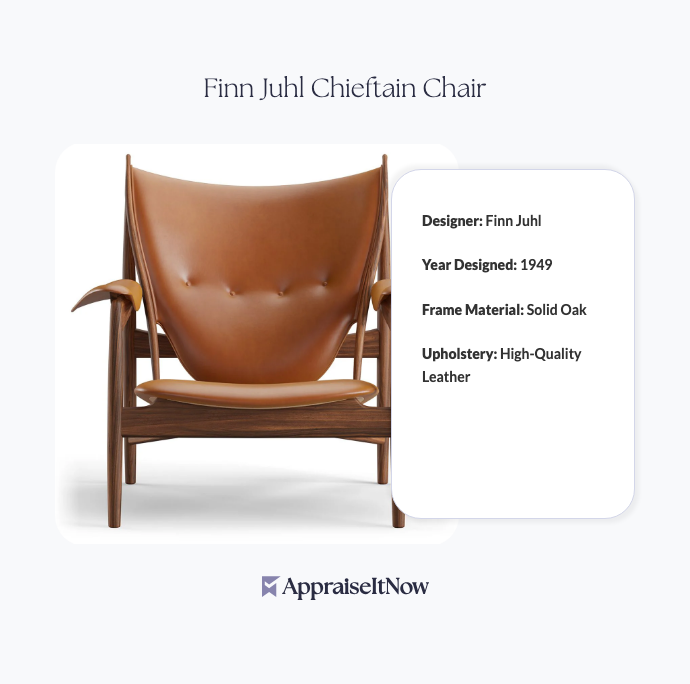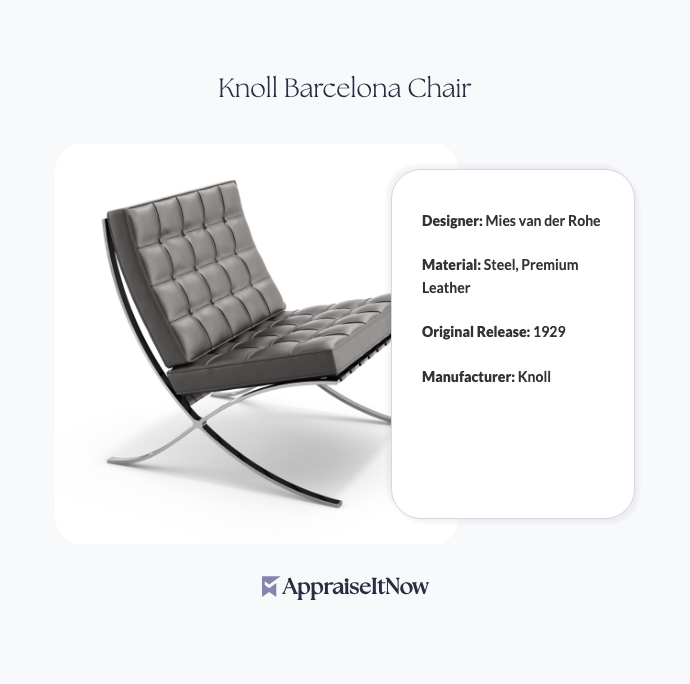<h1>How to Get Your Charlotte Perriand Stool Meribel Appraised</h1>
<p>The Charlotte Perriand Stool Meribel represents one of mid-century modernism's most iconic design pieces, commanding <strong>$15,000 to $25,000</strong> in today's collector market. Whether you're considering buying, selling, insuring, or simply verifying ownership of this legendary French design, understanding how professional appraisers evaluate its worth will help you make confident decisions about your investment.</p>
<h2>Understanding Your Charlotte Perriand Stool's Market Position</h2>
<p>Your Meribel stool carries the distinguished pedigree of <strong>Charlotte Perriand</strong>, one of the 20th century's most influential architects and designers. Created in the <strong>1930s</strong> specifically for a ski resort in the French Alps, this piece exemplifies Perriand's genius for merging functionality with aesthetic refinement. The stool features a minimalist design constructed from solid wood framing with a characteristic woven cane seat—a combination that has made it perpetually sought after by serious design collectors.</p>
<p>What makes the Meribel particularly special? Its origin story matters tremendously. Perriand didn't create furniture in isolation; she designed for specific environments and uses. The resort setting demanded durable, beautiful seating that could withstand both daily use and the demanding alpine climate. This practical thinking, combined with her modernist sensibility, elevated the Meribel from mere furniture to a functional art object. The stool's legendary status grew partly because Perriand worked alongside luminaries like Le Corbusier and Pierre Jeanneret, positioning her work at the very center of the modernist movement.</p>
<div class="callout tip"><p><strong>Design History Insight</strong></p>
<p>Pieces created for institutional or resort settings often command higher premiums because their documented usage adds historical richness and authenticity to the provenance.</p></div>
<h2>Why Condition and Authenticity Matter</h2>
<p>When evaluating your Charlotte Perriand Stool Meribel's value, professional appraisers focus on several critical factors that directly influence pricing within that <strong>$15,000–$25,000</strong> range. Unlike mass-produced furniture, each example tells a specific story through its condition and construction details.</p>
<p>The woven cane seat represents your stool's most vulnerable element. Original cane in excellent condition commands premium pricing, while replacements or deteriorated seating can reduce value by 20–40%. Solid wood frames should display appropriate patina and wear consistent with authentic age—refinished frames that appear artificially new actually raise red flags for experienced collectors, as they may indicate amateur restoration rather than careful preservation.</p>
<p>Matching serial numbers or maker's marks, when present, significantly enhance credibility. Some Charlotte Perriand pieces carry subtle production stamps or markings that specialists can identify. The wood species itself matters: original examples typically feature beech, elm, or similar period-appropriate timber. Modern substitutions or structural repairs using incompatible materials will concern professional appraisers evaluating authenticity.</p>
<h2>Authenticating Your Meribel Against Reproductions</h2>
<p>How do experts distinguish authentic Charlotte Perriand pieces from reproductions? This question becomes increasingly important as designer furniture attracts counterfeit production. A professional appraiser with <a href="/types/furniture">furniture</a> and design expertise will examine construction techniques, joinery methods, wood grain patterns, and finish characteristics that reveal a piece's true age and origin.</p>
<p>Authentic 1930s examples exhibit hand-crafted joinery details that mass-produced modern reproductions cannot replicate convincingly. The wood patina—accumulated finishes, oxidation, and natural color changes—tells a story that careful examination reveals. Reproduction pieces often have suspiciously uniform appearance, whereas original Perriand stools show subtle variations in cane weaving and wood aging patterns that authenticate their mid-century manufacture.</p>
<p>Professional appraisers specializing in <a href="/types/antique-furniture">antique furniture</a> understand the specific production methods Perriand employed and how her designs evolved across different periods and manufacturers. French production methods differed significantly from later Italian or Scandinavian reproductions, and specialists can identify these distinctions through detailed inspection.</p>
<div class="callout note"><p><strong>Authentication Consideration</strong></p>
<p>Request documentation of any previous expert assessment or certification. Museums and institutional collections sometimes publish catalogs identifying authentic examples, providing valuable reference points for your appraisal.</p></div>
<h2>Documentation and Provenance's Role in Valuation</h2>
<p>Ownership history profoundly affects your Charlotte Perriand Stool Meribel's appraised value. Appraisers weight provenance documentation heavily—receipts from period dealers, exhibition catalogs, institutional records, or transfers between known collectors substantially increase confidence in authenticity and can boost value by 15–30% compared to pieces with limited history.</p>
<p>Which provenance documents matter most? Auction house catalogs from Christie's, Sotheby's, or Drouot (the prominent French auction house) provide strong evidence of professional assessment and sales history. Gallery or dealer documentation showing original purchase, particularly from reputable modernist design specialists, carries significant weight. Estate records indicating how long a family held the piece offer context that collectors value.</p>
<p>If you're preparing for appraisal, compile any documentation available: original purchase receipts, past insurance valuations, exhibition catalogs, photographs showing the piece in previous collections, or correspondence with dealers. Even informal documentation—family records indicating when and where the stool was acquired—contributes context that appraisers consider. Gaps in provenance don't necessarily reduce value dramatically, but clear ownership chains command premium pricing.</p>
<h2>Market Trends and Recent Comparable Sales</h2>
<p>The mid-century modern design market has experienced remarkable appreciation over the past decade, with Charlotte Perriand pieces appreciating particularly strongly. Recent auction results show sustained collector demand, though individual sale prices vary significantly based on condition, size variant, and documented provenance.</p>
<p>Notable market activity includes institutional museum acquisitions and collector sales that set pricing benchmarks. Auction houses regularly feature Perriand designs, and tracking recent sales of comparable stools provides appraisers with essential market data. The broader <a href="/blog/appraising-contemporary-design-and-furniture-evaluating-modern-artistry">design furniture market</a> reflects growing recognition that modernist pieces represent both aesthetic and financial investments.</p>
<p>What distinguishes top-tier sales from lower-priced examples often involves rarity within the production run. Limited edition versions, pieces made for specific exhibitions or prestigious venues, or examples showing minimal restoration command the upper end of valuation ranges. Understanding your specific stool's characteristics relative to recently sold comparables helps establish realistic expectations.</p>
<h2>Condition's Impact on Fair Market Value</h2>
<p>How significantly does wear, restoration, or missing components affect your Charlotte Perriand Stool Meribel's value? A professional appraisal carefully documents condition, as this represents one of the most quantifiable value factors. Structural integrity, cane seat condition, wood finish preservation, and the quality of any repairs directly determine where your piece falls within the $15,000–$25,000 range.</p>
<p>Minor wear and patina consistent with eight decades of existence actually enhances authenticity for many collectors—refinished or overly restored pieces sometimes command lower prices than well-worn originals. However, active deterioration, broken structural elements, or poorly executed amateur repairs reduce value more substantially. Professional restoration by furniture conservation specialists costs significantly but can preserve value, whereas DIY repairs often create problems that appraisers note in detailed condition assessments.</p>
<p>Original components matter more than replacement parts. A Meribel with its original cane seat intact, even if worn, typically values higher than one with a rewebbed seat, even if that reweaving was expertly done. This principle reflects collectors' preferences for authenticity and originality over cosmetic perfection—a philosophy that distinguishes <a href="/types/antique-furniture">antique furniture</a> appraisals from modern furniture evaluation.</p>
<div class="callout tip"><p><strong>Preservation Priority</strong></p>
<p>Avoid aggressive cleaning or restoration before appraisal. Professional appraisers need to evaluate the piece in its current condition, and well-meaning restoration efforts might compromise the assessment or inadvertently damage historically significant patina.</p></div>
<h2>The Appraisal Process and Professional Expertise</h2>
<p>When you engage a professional appraiser for your Charlotte Perriand Stool Meribel, you're accessing specialized knowledge that goes far beyond general furniture appraisal. Experts in modernist design understand the nuances of 1930s production methods, can distinguish between design periods, recognize regional variations, and access comparative sales data that ordinary valuers simply don't possess.</p>
<p>A thorough appraisal begins with detailed photography and measurements, documenting every angle, joint, and surface characteristic. The appraiser will examine the wood species, joinery techniques, hardware details, and cane weaving patterns. They'll research your specific piece's production history—whether it was made in France, under license elsewhere, or represents a reproduction. This investigation establishes authenticity and helps position your stool within the market accurately.</p>
<p>Professional appraisers typically possess credentials from recognized organizations—look for <strong>ASA</strong> (American Society of Appraisers), <strong>ISA</strong> (International Society of Appraisers), <strong>AAA</strong> (American Association of Appraisers), or <strong>CAGA</strong> (Certified Appraisers Guild of America) certifications indicating formal training and ethical standards. Specialists in design furniture bring additional expertise beyond general appraisal credentials, understanding modernist design history and production methodologies that generalist appraisers may not possess.</p>
<h2>Remote and In-Person Appraisal Considerations</h2>
<p>Can a reliable appraisal be performed from photographs and documentation alone? Many appraisers can provide initial consultations and preliminary assessments based on detailed photographs, thorough descriptions, and historical documentation. This remote approach works well for preliminary estimates or when you're considering whether to pursue a full appraisal.</p>
<p>However, for formal, USPAP-compliant appraisals—particularly for insurance, sale, or estate purposes—most professional appraisers recommend in-person inspection. Examining the wood grain, cane condition, finish characteristics, and construction details in person reveals nuances that photographs cannot fully capture. An expert can assess wear patterns, evaluate repair quality, and verify authenticity details that demand hands-on evaluation.</p>
<p>If you're in a region without local modernist design specialists, many appraisers now offer hybrid approaches: video consultation combined with detailed photography you provide, followed by professional assessment. Some consultants even travel for significant pieces or high-value collections. This flexibility means geographic location shouldn't prevent you from accessing qualified expertise.</p>
<h2>Typical Appraisal Costs and Timelines</h2>
<p>Professional appraisals of designer furniture like your Charlotte Perriand Stool Meribel typically cost <strong>$300–$1,000</strong> for formal, detailed reports suitable for insurance, sale, or legal proceedings. Premium consultants specializing in modernist design may charge higher fees, reflecting their expertise and market knowledge. Initial consultations or preliminary estimates often cost less and help you determine whether a comprehensive appraisal serves your needs.</p>
<p>Turnaround time typically ranges from <strong>5–15 business days</strong> once the appraiser has completed inspection and research. Formal reports include detailed descriptions, condition assessments, market analysis, comparable sales documentation, and professional conclusions of value. These reports meet USPAP (Uniform Standards of Professional Appraisal Practice) standards, ensuring they're accepted by insurance companies, courts, auction houses, and financial institutions.</p>
<h2>Common Uses for Charlotte Perriand Stool Appraisals</h2>
<p>Professional appraisals serve multiple purposes. If you're <strong>insuring your stool</strong>, underwriters require certified valuations establishing replacement cost. For <strong>selling purposes</strong>, whether at auction, through dealers, or privately, appraisals provide documentation that supports asking price and builds buyer confidence. <strong>Estate planning</strong> and inheritance situations often require formal valuations for distribution purposes or tax documentation.</p>
<p>Collectors building or managing significant design furniture collections use appraisals for <strong>portfolio evaluation</strong> and acquisitions strategy. <strong>Charitable donations</strong> of valuable pieces to museums or institutions typically require professional documentation for tax deduction purposes. These varied applications mean your appraisal investment serves multiple potential functions beyond simple curiosity about worth.</p>
<h2>Where to Sell and How Sales Channels Affect Price</h2>
<p>Understanding where and how to sell your Charlotte Perriand Stool Meribel significantly impacts the price you'll achieve. <strong>Auction houses</strong> specializing in design furniture—Christie's, Sotheby's, or specialized modernist design auctioneers—expose your piece to international collectors and typically achieve strong results for authenticated, well-documented examples. Auction houses charge commissions (typically 15–25%) but provide professional marketing and access to serious bidders.</p>
<p><strong>Specialized dealers</strong> in modernist design furniture often maintain steady customer bases actively seeking specific pieces. Private sales through dealers may offer faster transactions and consistent pricing, though typically at slightly lower prices than auction results. <strong>Online marketplaces</strong> reach broader audiences but require careful presentation and carry risks regarding authentication and buyer credibility. <strong>Direct private sales</strong> to collectors can sometimes achieve premium pricing if you connect with motivated buyers, but require substantial marketing effort and involve higher risk.</p>
<p>Professional appraisals enhance any sales channel by providing documentation that sophisticated buyers expect and value. Whether pursuing auction, dealer placement, or private sale, your appraised value serves as an authoritative starting point for negotiations and demonstrates serious intent regarding your piece's market position.</p>
<div class="callout note"><p><strong>Key Takeaway</strong></p>
<p>A certified, USPAP-compliant appraisal of your Charlotte Perriand Stool Meribel provides essential documentation whether you're insuring, selling, donating, or planning your collection's future. Professional experts understand the specific factors affecting modernist design value, authenticate your piece against reproductions, and position it accurately within today's market—giving you confidence that you understand your investment's true worth.</p></div>







.avif)







